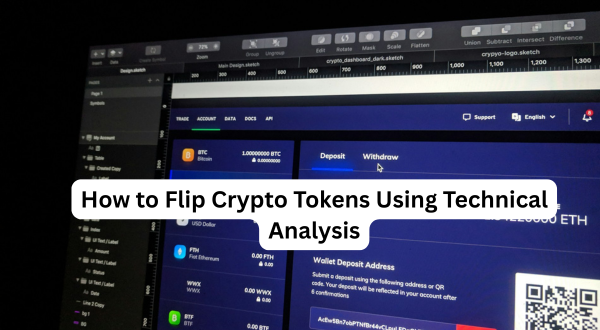The crypto market is fast-paced, volatile, and full of opportunity. One of the most popular ways traders make money is by flipping crypto tokens—buying low and selling high over short-term movements. But unlike gambling, successful traders rely on data-driven methods like technical analysis to inform their decisions.
In this post, we’ll break down how to flip crypto tokens using technical analysis—even if you’re just starting out.
🔍 What Is Technical Analysis?
Technical analysis (TA) is the practice of studying historical price charts, volume, and market patterns to predict future price movements. Unlike fundamental analysis (which looks at the value of a project), TA focuses solely on what the market is doing right now.
✅ Step-by-Step Guide to Flipping Crypto Tokens Using Technical Analysis
1. Choose the Right Token
Start by selecting a token that:
- Has high liquidity (popular tokens like BTC, ETH, SOL, etc.)
- Is listed on major exchanges
- Has noticeable price volatility (you need price swings to profit)
Avoid dead or low-volume coins—getting stuck in them can be costly.
2. Pick a Trading Platform with Chart Tools
Use platforms like:
- TradingView (popular for its robust TA tools)
- Binance, Bybit, or KuCoin for built-in charts
- CoinMarketCap or CoinGecko for basic trends
Look for platforms with candlestick charts, drawing tools, and indicators.
3. Learn Key Technical Indicators
Here are essential tools you’ll use to make flipping decisions:
- Support & Resistance Levels: Horizontal lines showing where price tends to bounce or get rejected.
- Moving Averages (MA): Shows the average price over a set time (e.g., 50-day MA) to identify trends.
- Relative Strength Index (RSI): Measures if a token is overbought (70+) or oversold (30-).
- MACD (Moving Average Convergence Divergence): A momentum indicator to spot trend reversals.
- Volume: Confirms the strength of price movements.
4. Find Entry & Exit Points
Using the indicators above:
- Buy near support or during oversold conditions (e.g., RSI below 30).
- Sell near resistance or during overbought conditions (e.g., RSI above 70).
- Look for bullish reversal patterns (e.g., hammer, double bottom) to enter.
- Spot bearish signals (e.g., shooting star, bearish divergence) to exit.
Never buy just because of hype—stick to the charts.
5. Set Your Targets and Stop Loss
Don’t trade without a plan.
- Set a take-profit level (e.g., 10-20% above your buy-in).
- Always use a stop-loss (e.g., 5-10% below entry) to limit risk.
Flipping isn’t about being right all the time—it’s about protecting your capital and maximizing gains.
6. Stick to a Trading Strategy
Here are two simple flipping strategies:
- Breakout Trading: Buy when the price breaks above resistance with volume.
- Range Trading: Buy at support, sell at resistance, repeat.
Practice on demo accounts before going live.
7. Track Your Trades
Keep a spreadsheet or use portfolio trackers like:
- CoinTracking
- CoinStats
- Delta
Log your entry, exit, profit/loss, and what indicators you used. This helps refine your strategy over time.
🚨 Common Mistakes to Avoid
- Chasing Pumps: Entering after a big move usually ends in losses.
- Ignoring Risk Management: Never risk more than 1-2% of your capital on one trade.
- Overtrading: Only trade high-probability setups—don’t force trades.
- FOMO & Emotion: Stick to your plan, not your feelings.
🧠 Final Thoughts
Flipping crypto tokens using technical analysis can be profitable, but it requires discipline, education, and practice. Start small, keep learning, and never trade with money you can’t afford to lose.
Pro tip: Combine technical analysis with basic news awareness—major updates can still impact even the most perfect chart setups.
Ready to Get Started?
Open a TradingView account and start analyzing your favorite tokens. Practice marking support/resistance levels and test indicators like RSI. With consistency, you’ll start spotting patterns that others miss.
 UBUCH ubuch | Honest Tech Reviews & Tutorials for Everyone
UBUCH ubuch | Honest Tech Reviews & Tutorials for Everyone




